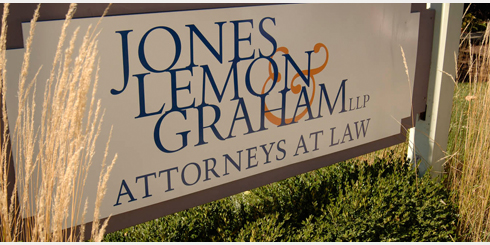So my D&O insurer removed the regulatory exclusion for FDIC suits. Then why isn’t it defending me against the FDIC suit?
by Christopher Graham and Joseph Kelly
You’re a bank director. You have a D&O policy. It has a so-called regulatory exclusion, for claims by the FDIC against you if the bank fails. The D&O insurer endorses the policy to remove the regulatory exclusion. “That’s good,” you say. “One less worry. I now have coverage for those claims if the bank were to fail.” But a Kansas Federal judge in Bancinsure v. McCaffree, et al, Case No. 12-2110-KHV (D. Kan. Feb. 27, 2014) says you better think twice.
Why? Well, yes the insurer removed the regulatory exclusion. But in that case, the insurer’s “insured v. insured” or IVI exclusion was unlike typical IVI exclusions. Like typical IVI exclusions, the exclusion applied to a Claim made by one Insured against another Insured, subject to exceptions. But unlike typical IVI exclusions, the exclusion also explicitly applied to to a Claim by a “receiver” against an Insured.
Here’s the exclusion in it’s entirety:
The Insurer shall not be liable . . . for Loss in connection with any Claim made against the Insured Persons based upon, arising out of, relating to, in consequence of, or in any way involving . . . a Claim by, or on behalf, or at the behest of, any other Insured Person, the Company, or any successor, trustee, assignee or receiver of the Company.
“Insured Persons” included former directors. “Company” included the bank.
So you may not have noticed. Your insurer may not have highlighted it for you. And your broker may not have either. But your IVI exclusion may cover some of the same territory as your removed regulatory exclusion including, according to this court, a suit by FDIC as receiver, perhaps the most significant risk to your personal assets.
As the opinion shows, it’s the latest of many IVI cases, but with twists. Each case depends on policy wording, state law, and other facts. Most courts have refused to apply the IVI exclusion to FDIC suits. But this court distinguished those cases, citing Kansas law and the phrase “any successor, trustee, assignee or receiver of the Company.” According to the court, the FDIC was a “receiver” — so the exclusion applied.
This court didn’t care about the endorsement deleting the regulatory exclusion. Directors argued the endorsement lead them to reasonably believe a claim previously excluded under the deleted exclusion would be covered, namely, a claim by FDIC as receiver. They argued the endorsement would be meaningless if the IVI exclusion applied. And they argued that including an IVI exclusion and regulatory exclusion endorsement created ambiguity about whether FDIC claims as receiver were excluded. So did the FDIC.
But the court disagreed:
[T]he policy language allows the [IVI] exclusion to bar coverage of the FDIC claims without rendering the regulatory exclusion endorsement meaningless. The [IVI] exclusion specifically applies to claims brought by a receiver, and here, FDIC clearly asserted claims against the insured officers and directors in its capacity as receiver. The regulatory exclusion endorsement extended the Policy to provide coverage for any number of regulatory actions by FDIC and other agencies. The endorsement applies exclusively to the regulatory exclusion and does not waive any other policy provision, including the [IVI] exclusion.
Directors and FDIC also argued the exclusion was meant for collusive suits by one insured against another to get insurance, not for non-collusive suits by FDIC. They referenced court opinions saying so. But this court again disagreed:
[Directors and FDIC] cite cases which discuss the exclusion’s anti-collusive purpose, but those cases do not hold that the exclusion does not apply where its purpose is not served. Moreover, the purpose is not even relevant. See Sphinx Int’l, Inc. v. Nat’l Union Fire Ins. Co. of Pittsburgh, Pa., 412 F.3d 1224, 1229 (11th Cir. 2005) (collecting cases). This Court is bound to apply Kansas law, and to give the terms of an insurance policy their plain and ordinary meaning. [Citation omitted] The historical purpose of the exclusion holds no sway. See Sphinx, 412 F.3d at 1229 (exclusion’s rationale does not trump text).
There was no ambiguity by having an IVI exclusion and endorsement removing a regulatory exclusion, says this court.
FDIC also argued “industry custom and practice” showed this insurer intended to cover the FDIC’s suit here. That custom and practice included “the historical context of the banking crisis of the late 1980s and early 1990s when several courts rejected ‘insured v. insured’ exclusions where the policies did not specifically exclude coverage for actions by ‘receivers,’ thereby prompting insurers to add regulatory exclusions to their policies.” But, according to this court, there was no need to consider “custom and practice” because the policy was unambiguous.
FDIC argued in addition that because of a prior inconsistent position insurer was judicially estopped from denying coverage. But this court said judicial estoppel was inapplicable.
So what did the endorsement removing the regulatory exclusion accomplish? Not much, according to this court. Some limited coverage for claims by regulators, but no coverage for a community banker’s greatest fear – a suit by FDIC following a bank failure. What the big print giveth, the small print taketh?
For another view about this case, see Joe Monteleone’s blog post here. For a discussion of the FDIC’s October 10, 2013 Financial Institution Letter 47-2013 warning of areas of concern for bank D&O policies, see Travis Nelson of Reed Smith’s discussion here. Kevin LaCroix also discussed the issue here.
Stay tuned for more posts about cases addressing this issue and similar issues. There are more to come soon!
UPDATE: On March 28, 2014, FDIC and the director defendants appealed to the 10th Circuit. We’ll let you know what happens!
Tags: Kansas, D&O, directors and officers liability insurance, management liability insurance, insured vs. insured exclusion, Insured versus insured exclusion, regulatory exclusion, FDIC, collusion, judicial estoppel, custom and practice






